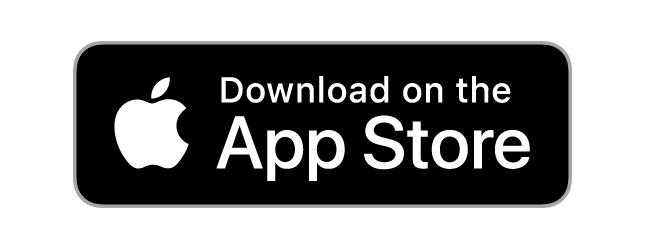
Understanding Blood Pressure and Cardiac Assist Devices
- Published By The Statesman For The Statesman Digital
- 6 months ago
-
What is blood pressure?Blood pressure is the force of your blood pushing against the walls of your arteries as your heart pumps blood throughout your body.
-
Why is it important?According to the American Heart Association, understanding your blood pressure is crucial for maintaining good health, as high blood pressure (hypertension) can lead to serious health problems like heart disease, stroke, and kidney disease.
-
How is it measured?Blood pressure is measured in millimeters of mercury (mmHg) and is expressed as two numbers:
- Systolic pressure: The first number, representing the pressure in your arteries when your heart beats (contracts).
- Diastolic pressure: The second number, representing the pressure in your arteries when your heart rests between beats (relaxes).
- Systolic pressure: The first number, representing the pressure in your arteries when your heart beats (contracts).
-
What are normal blood pressure readings?A healthy blood pressure reading is typically below 120/80 mmHg.
- Normal: Less than 120/80 mmHg.
- Elevated: 120-129 systolic and less than 80 diastolic.
- High blood pressure (hypertension): 130/80 mmHg or higher.
- Normal: Less than 120/80 mmHg.
-
Why is high blood pressure dangerous?High blood pressure can damage your arteries, making them stiff and narrow, which can increase your risk of heart attack, stroke, and other health problems.
-
What can I do to manage my blood pressure?
- Healthy lifestyle: The American Heart Association recommends adopting a healthy lifestyle, including a balanced diet, regular exercise, and maintaining a healthy weight.
- Stress management: Managing stress through techniques like yoga, meditation, or spending time in nature can help lower blood pressure.
- Limit sodium intake: Reducing sodium intake can help lower blood pressure.
- Reduce alcohol consumption: Limiting alcohol intake can help lower blood pressure.
- Regular checkups: The NHS recommends regularly checking your blood pressure with a healthcare professional is essential for early detection and management of high blood pressure.
Definations:
1. A stroke, also known as a brain attack or cerebral vascular accident, occurs when blood flow to the brain is interrupted, leading to brain damage or death. It can be caused by a blocked blood vessel (ischemic stroke) or a ruptured blood vessel (hemorrhagic stroke).
Here's a more detailed explanation:What is a stroke?-
Definition:A stroke happens when blood flow to part of the brain is cut off, causing brain cells to die or become damaged.
-
Types:
- Ischemic stroke: Occurs when a blood clot or other blockage prevents blood from flowing to the brain.
- Hemorrhagic stroke: Occurs when a blood vessel in the brain bursts and bleeds.
Ischemic stroke:Causes:Thrombotic stroke: A blood clot forms within a blood vessel in the brain.Embolic stroke: A blood clot or other debris travels from another part of the body to the brain and blocks a blood vessel.Hemorrhagic stroke:Ruptured aneurysm: A weakened blood vessel wall in the brain bursts.Arteriovenous malformation (AVM): A tangle of abnormal blood vessels in the brain that can rupture.1. Sudden numbness or weakness, especially on one side of the body.Symptoms:2. Difficulty speaking or understanding.3. Vision problems.4. Dizziness, loss of balance, or coordination problems.5. Severe headache.Ischemic stroke:Treatment:Thrombolysis (clot-busting medication): Administered within a specific timeframe to dissolve the clot.Thrombectomy (clot removal procedure): Surgically or using a catheter to remove the clot.Hemorrhagic stroke:Surgery: To stop bleeding or repair a ruptured blood vessel.Medications: To control blood pressure and reduce the risk of further bleeding.1. Stroke rehabilitation can help people regain lost skills and functions.Recovery:2. Rehabilitation may include physical, occupational, and speech therapy.3. Recovery time can vary depending on the severity of the stroke and individual factors.Managing risk factors: High blood pressure, high cholesterol, diabetes, smoking, and obesity.Prevention:Healthy lifestyle: Regular exercise, a balanced diet, and maintaining a healthy weight.2. Cardiac arrest is a sudden, unexpected cessation of the heart's ability to pump blood, leading to a lack of oxygen to vital organs and potentially death if not treated immediately.Here's a more detailed explanation:-
What it is:Cardiac arrest occurs when the heart stops beating effectively, resulting in a lack of blood flow to the brain and other organs.
-
Why it's dangerous:Without a constant supply of oxygenated blood, vital organs begin to suffer, and brain damage or death can occur within minutes.
Causes:Cardiac arrest is often caused by a serious heart rhythm problem (arrhythmia) or other underlying heart conditions.Symptoms:Someone experiencing cardiac arrest may collapse suddenly, lose consciousness, stop breathing or have ineffective breathing (gasping), and have no pulse.Treatment:Immediate treatment is crucial and typically involves cardiopulmonary resuscitation (CPR) and defibrillation (using an AED) to restore a normal heart rhythm.CPR:CPR helps to keep blood and oxygen circulating to the brain and other vital organs until medical help arrives.Defibrillation:A defibrillator delivers an electric shock to the heart to try and restore a normal heart rhythm.First Aid:If you witness someone experiencing cardiac arrest, call emergency services (911 or your local emergency number), and start CPR if you are trained to do so.Heart Attack vs. Cardiac Arrest:It's important to note that a heart attack (myocardial infarction) is different from cardiac arrest. A heart attack occurs when blood flow to the heart is blocked, causing damage to the heart muscle, while cardiac arrest is a failure of the heart's electrical system that stops the heart from beating.Risk Factors:Certain conditions and behaviors can increase the risk of cardiac arrest, including heart disease, high blood pressure, and certain genetic conditions.3. Cardiopulmonary resuscitation (CPR) is a life-saving emergency procedure used when someone's breathing or heartbeat has stopped, combining chest compressions and rescue breaths to maintain circulation and oxygen flow until medical help arrives.Here's a more detailed explanation:- What it is: CPR is an emergency technique that aims to manually preserve brain function by maintaining blood flow and oxygen delivery to vital organs when a person's heart has stopped beating or is not beating effectively.
- Why it's important: CPR can significantly increase a person's chances of survival after cardiac arrest, which is when the heart stops beating.
How it works:Chest compressions: Pushing hard and fast on the chest helps to move blood around the body.Rescue breaths: Blowing air into the person's mouth or nose helps to deliver oxygen to the lungs.When to perform CPR:If someone collapses and is unresponsive.If they are not breathing or are only gasping.If they have no pulse.
Cardiac Assist Devices
- Healthy lifestyle: The American Heart Association recommends adopting a healthy lifestyle, including a balanced diet, regular exercise, and maintaining a healthy weight.
Overview
What is a cardiac assist device?
A cardiac assist device is a small machine a healthcare provider can put in your chest to help your heart work better. Cardiac devices can help people with abnormal heart rhythms (arrhythmias) have a regular rhythm. They can help you avoid cardiac arrest or help your heart pump blood.
In America, the U.S. Food and Drug Administration (FDA) approves these cardiac devices for use. The FDA reviews devices to ensure they’re safe and work well. Thinking about having a machine in your chest may make you uneasy, but millions of people rely on cardiac devices to help them feel better and live longer.
What are the different types of cardiac devices?
Cardiac device types include:
- Pacemaker. This device tells your heart muscle when to contract (pump). A pacemaker’s wire (lead) usually goes into your lower right heart chamber (right ventricle).
- Biventricular pacemaker. Leads from this device touch both of your lower heart chambers (ventricles) and your right upper chamber (atrium). The device helps them pump together.
- Implantable cardioverter defibrillator (ICD). This cardiac device can shock your heart to correct its rhythm if it’s too fast. Correcting your rhythm helps protect you from sudden cardiac death.
- Ventricular assist device (VAD). This machine helps your heart pump blood to your body. It can help either side of your heart or both, but most often the left.
-
Electrocardiogram (ECG) Machines:Used to record the electrical activity of the heart, helping diagnose arrhythmias and other heart conditions.
-
Automated External Defibrillators (AEDs):Portable devices that can deliver an electrical shock to restore a normal heart rhythm in cases of cardiac arrest.
-
Cardiac Mapping Systems:Used to identify the source of arrhythmias and guide ablation procedures.
-
Hemodynamic Monitors:Devices that measure blood pressure, heart rate, and other vital signs during cardiac procedures.
-
Cardiac Output Monitors:Devices that measure the amount of blood the heart pumps out with each beat.
-
Echocardiogram (Cardiac Ultrasound):A non-invasive imaging technique that uses sound waves to create images of the heart's structure and function.
-
Holter Monitor:A portable ECG device worn for 24 hours or more to record heart activity.
-
Cardiac Catheterization Equipment:Used to diagnose and treat coronary artery disease, including catheters, guidewires, and balloon devices.
-
Endoscopic Devices:Used to visualize and perform procedures on the heart and blood vessels, such as valve repairs and angioplasty.
-
Cardiac Resynchronization Therapy (CRT) Devices:A type of pacemaker that synchronizes the contractions of both ventricles, improving heart function in patients with certain types of heart failure.
-
Prosthetic Heart Valves:Used to replace diseased or damaged heart valves, directing blood flow through the heart.
-
Stents:Small, mesh tubes inserted into arteries to keep them open and improve blood flow.
-
Cardiac Loop Recorders:Small devices implanted under the skin to record heart rhythms over a long period of time, helping diagnose intermittent arrhythmias.
Why are cardiac assist devices used?
Cardiac assist devices help your heart keep a regular rhythm, avoid cardiac arrest or pump better. Your healthcare provider may recommend one for you if you have:
- Irregular heart rate
- Heart block (slow or blocked signals)
- Sick sinus syndrome (a problem with the node that sends signals)
- Long QT syndrome (long recharging time after each beat)
- Tachycardia (fast heart rate)
- Bradycardia (slow heart rate)
- Ventricular fibrillation (a life-threatening arrhythmia)
- Heart failure (inability to pump enough blood)
- Cardiomyopathy (diseased heart muscle)
How do cardiac devices work?
When a provider implants a cardiac device like a pacemaker or ICD, they put wires (leads) from the device into your heart tissue. Providers attach leadless pacemakers to your right ventricle. Contact with your heart tissue allows the device to sense what’s happening there and send an electric impulse to make your heart beat. An ICD can send a shock if you need it.
Cardiac devices follow the program your provider sets from outside your body. A small, long-lasting battery powers a cardiac device.
Some cardiac assist devices can collect information that you can send to your provider by phone or internet. This lets your provider know what’s happening in your heart without frequent visits. Looking over the data can help your provider catch changes that may be going on before they get worse.
Part of a ventricular assist device (VAD) attaches to your lower heart chamber. Another part of it (including the battery) is outside your body. A VAD’s pump takes the workload off your heart muscle.
Risks / Benefits
What are the advantages of cardiac assist devices?
Advantages of cardiac devices include:
- Lifesaving protection from cardiac arrest
- Better circulation
- More regular heart rhythms
- Improved symptoms of heart rhythm issues
- Fewer hospital stays due to heart issues
- A minimally invasive procedure for some types
- Device battery life that can last six to 15 years
What are the possible side effects of cardiac assist devices?
Complications of cardiac devices (or procedures to implant them) may include:
- Bleeding
- A small puncture in your heart
- Collapsed lung (pneumothorax)
- Blood clots
- Hematoma (collection of blood)
- Issues with broken pacemaker lead wires
- Device malfunction
- Device moving out of place
- Cardiomyopathy
- Infection related to the device
Recovery and Outlook
How soon after treatment will I feel better?
Cardiac devices start to work when your provider finishes setting them up. They may need to adjust settings on your device before or after you leave the hospital. Staying in contact with your healthcare team can let them know how well a cardiac device is working for you. You may have a cardiac device for the short term (like a VAD if you’re waiting for a heart transplant) or for the long term (like a pacemaker or ICD).
How can I take care of myself with a cardiac device?
Follow your provider’s instructions about caring for the places where they cut into your skin. You may also need to limit your physical activity for a while. Ask your provider when you can return to working and driving.
If you have a cardiac assist device and need an MRI, talk with your provider about special steps the imaging staff will need to take. Most people with a device can have an MRI, but providers need to make sure it’s safe for you.
You shouldn’t have trouble with everyday items like cell phones, microwaves or security scanners, though.
Share on
SHARE YOUR COMMENT
MORE STORIES FOR YOU
Trending Stories
DJ Mo’s former illicit lo...
- Published By Jane
- January 15, 2024
Mapenzi! Zari and Tanasha...
- Published By Jane
- October 24, 2023
Zuchu Speaks on Diamond P...
- Published By Jane
- October 12, 2023
Hio Ni Upumbavu Wasituche...
- Published By Jane
- November 8, 2023
RECOMMENDED FOR YOU
How People are Using AI t...
- Published By The
- October 29, 2025
How Raila Odinga’s Death...
- Published By The
- October 29, 2025
What is Ayurveda? Raila O...
- Published By The
- October 29, 2025
Why Parents Should Spend...
- Published By The
- October 29, 2025
Latest Stories
President Samia Suluhu De...
- Published By The
- November 1, 2025
So Sad, Uhuru Kenyatta Op...
- Published By The
- November 1, 2025
Property Prices Rise in N...
- Published By The
- October 29, 2025
President William Ruto on...
- Published By The
- October 29, 2025



